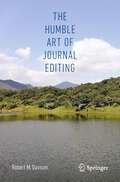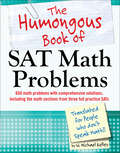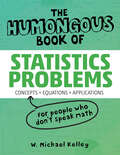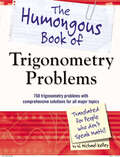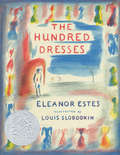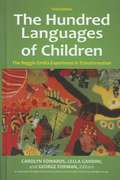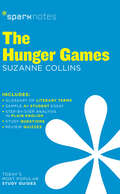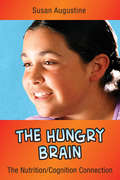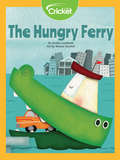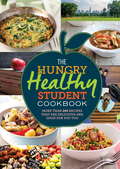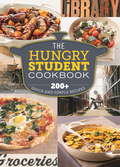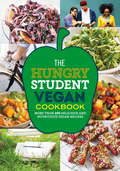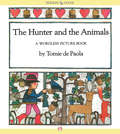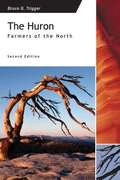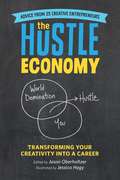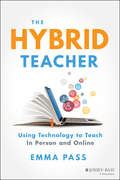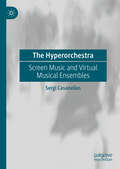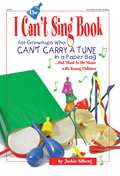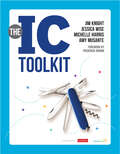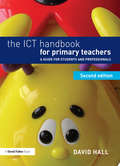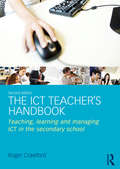- Table View
- List View
The Humble Art of Journal Editing
by Robert M. DavisonThe publication of scholarly research is both a major driver of social progress and a significant industry in its own right. Scholarly research is the focus of attention for countless numbers of scholars globally and a key measure of scholarly excellence. Much has been written about the conduct of research that is designed to help scholars attain appropriate standards of rigor and relevance, and indeed craft their research outputs in ways appropriate for different venues, notably as journal articles, conference papers, book chapters, and books. However, although scholarly researchers fulfill roles other than as authors, for instance as journal reviewers and editors, there is a dearth of consolidated information about the nature of editorial work. Drawing on over two decades of experience in editing scholarly journals, the author offers a more systematic guide to scholarly journal editing.The book begins with an introduction to the art of scholarly journal editing,the nature of that art (Chapter 1), and an examination of editorial promulgation of cultural values of scholarly journals with an emphasis on responsible research (Chapter 2). Chapter 3 examines the many issues associated with sourcing content, and opines on the novelty, breadth, and depth of research, including discussions of indigenous theorization, serendipity, iconoclastic research, and the value of special issues. Chapter 4 deals with the review process and offers advice for formulating effective reviewer guidelines that lead to constructive and developmental advice for authors. The next two chapters discuss the audience of the journal as well as publisher relations. Finally, the book is concluded with thoughts and recommendations about emerging challenges, such as the ethics of AI tools (like ChatGPT), predatory journals, and the open-access movement.Offering a practical guide to editing scholarly journals, this book will be a key resource for scholars making the leap from researcher to editor, regardless of discipline.
The Humongous Book of SAT Math Problems: 750 Math Problems with Comprehensive Solutions for the Math Portion of the SAT (Humongous Books)
by W. Michael KelleyTranslating math for people who don't speak math! The Humongous Book of SAT Math Problems takes a typical SAT study guide of solved math problems and provides easy-to-follow margin notes that add missing steps and simplify the solutions, thereby better preparing students to solve all types of problems that appear in both levels of the SAT math exam. Award-winning teacher W. Michael Kelley offers 750 problems with step-by-step notes and comprehensive solutions. The Humongous Books are like no other math guide series!
The Humongous Book of Statistics Problems (Humongous Books)
by W. Michael Kelley Robert DonnellyLearn to solve statistics problems—and make them no problem! Most math and science study guides are dry and difficult, but this is the exception. Following the successful The Humongous Books in calculus and algebra, bestselling author Mike Kelley takes a typical statistics workbook, full of solved problems, and writes notes in the margins, adding missing steps and simplifying concepts and solutions. By learning how to interpret and solve problems as they are presented in statistics courses, students prepare to solve those difficult problems that were never discussed in class but are always on exams. There are also annotated notes throughout the book to clarify each problem—all guided by an author with a great track record for helping students and math enthusiasts. His website (calculus-help.com) reaches thousands of students every month.
The Humongous Book of Trigonometry Problems: 750 Trigonometry Problems with Comprehensive Solutions for All Major Topics (Humongous Books)
by W. Michael KelleyBecome a trig master in no time!Most math and science study guides are a reflection of the college professors who write them: dry, difficult, and pretentious. The Humongous Book of Trigonometry Problems is the exception. Author Mike Kelley has taken what appears to be a typical trigonometry workbook, chock full of solved problems—more than 750!—and made notes in the margins adding missing steps and simplifying concepts and solutions, so what would be baffling to students is made perfectly clear. No longer will befuddled students wonder where a particular answer came from or have to rely on trial and error to solve problems. And by learning how to interpret and solve problems as they are presented in a standard trigonometry course, students become fully prepared to solve those difficult, obscure problems that were never discussed in class but always seem to find their way onto exams.
The Hundred Dresses: Instructional Guides For Literature
by Eleanor Estes Louis SlobodkinAt the heart of the story is Wanda Petronski, a Polish girl in a Connecticut school who is ridiculed by her classmates for wearing the same faded blue dress every day. Wanda claims she has one hundred dresses at home, but everyone knows she doesn't and bullies her mercilessly. The class feels terrible when Wanda is pulled out of the school, but by that time it's too late for apologies. Maddie, one of Wanda's classmates, ultimately decides that she is "never going to stand by and say nothing again."<P><P> Newbery Honor book
The Hundred Languages of Children: The Reggio Emilia Experience in Transformation
by Carolyn Edwards Lella Gandini George FormanWhy does the city of Reggio Emilia in northern Italy feature one of the best public systems of early education in the world? This book documents the comprehensive and innovative approach that utilizes the "hundred languages of children" to support their well-being and foster their intellectual development.
The Hunger Games (SparkNotes Literature Guide Series #34)
by SparkNotesThe Hunger Games (SparkNotes Literature Guide) by Suzanne Collins Making the reading experience fun! When a paper is due, and dreaded exams loom, here's the lit-crit help students need to succeed! SparkNotes Literature Guides make studying smarter, better, and faster. They provide chapter-by-chapter analysis; explanations of key themes, motifs, and symbols; a review quiz; and essay topics. Lively and accessible, SparkNotes is perfect for late-night studying and paper writing. Includes:An A+ Essay—an actual literary essay written about the Spark-ed book—to show students how a paper should be written.16 pages devoted to writing a literary essay including: a glossary of literary termsStep-by-step tutoring on how to write a literary essayA feature on how not to plagiarize
The Hungry Brain: The Nutrition/Cognition Connection
by Susan AugustineFeed the brain first to make the nutrition/cognition connection!Focusing on nutrition's role in promoting learning, the author calls on educators to model good food choices for their students. Building on a simple three-part framework of plant foods, animal foods, and junk foods, and incorporating exercise, the text shows educators how:Healthy eating provides a powerful link to learningChildhood obesity, food allergies, and other disorders may be related to eating habitsBreakfast is still the most important meal of the dayBrain-jogging exercises enhance brain activity, improve physical health, increase clarity, and reduce stress
The Hungry Ferry
by Jordan LundquistThe hungry ferry eats up the cars, takes them across the water, and spits them out.
The Hungry Healthy Student Cookbook: More than 200 recipes that are delicious and good for you too (The Hungry Cookbooks)
by SpruceA student cookbook with a difference, The Hungry Healthy Student offers a choice of more than 200 quick, cheap and easy recipes, meaning more money in your pocket and more time to play! All the recipes have a healthy focus which means increased brain power and more energy to enjoy student life to the full. There are also indispensable tips on healthy habits, mood boosters, free ways to get fit and takeaway alternatives.With chapters dedicated to Breakfast and Lunchbox; Healthy and Hearty; Good Grains, Beans and Pulses; Super Salads, Snacks and Sides; Make it Light and Sweet Alternatives, there are recipes whether you want food on the go, for impromptu parties, or just comfort food and delicious treats for a night in.All the recipes in this book are balanced for a healthy diet, and they each have an affordability stamp to help with budgeting, as well as detailed instructions to make them accessible to even the most novice cook.Forget the textbooks, this is the only book you'll ever need to get through your first year!
The Hungry Kitten (Into Reading, Level E #19)
by Beverley Randell Leanne FlemingNIMAC-sourced textbook
The Hungry Mind
by Susan EngelDespite American education's mania for standardized tests, testing misses what matters most about learning: the desire to learn in the first place. Susan Engel offers a highly readable exploration of what curiosity is, how it can be measured, how it develops in childhood, and how educators can put curiosity at the center of the classroom.
The Hungry Student Cookbook: 200+ Quick and Simple Recipes (The Hungry Cookbooks)
by Pauline BacheA student cookbook with a difference, The Hungry Student not only gives more than 200 quick, cheap and tasty recipes that will impress all your mates, but there are also indispensable tips on everything the new student needs to know, from barbecuing tips and drinking games, to how to tackle those tricky household chores. With chapters dedicated to PhD in One Pot, Outdoor Grub, Mates for Tea, Strapped for Cash, Eat Healthy, Bachelor of Budget Bakes & Puds, Back to Basics and The Bar, there are opportunities for impromptu parties, end of the month budget creations and comfort foods for one.Each recipe has a cost breakdown to help with budgeting and detailed instructions to make them accessible to even the most novice cook. While Eat Healthy contains full nutritional information to prep your body and brain for intensive studying (and partying!)Forget the textbooks, this is the only book you'll ever need to get through your first year!
The Hungry Student Vegan Cookbook (The Hungry Cookbooks)
by The Hungry Student Vegan CookbookWith all the essays and exams, not to mention the enormous pressure of having to go out partying four nights on the trot, staying healthy and well-fed has never been more important, and The Hungry Student Vegan Cookbook will make sure you get all the essential nutrients to get you through from freshers' week to graduation, all while following a vegan diet. Alongside the recipes are helpful hints and tips for getting the most out of a tiny student budget, creating gourmet feasts out of what you can find in your storecupboard, and advice on what kind of equipment you might need to take to uni (read: steal from the kitchen at home).Carry the flag for the vegan revolution all the way to your student halls, and once your new friends get a whiff of the amazing food you're cooking up, you're bound to find more people are willing to join the healthy-eating and cruelty-free vegan revolt. Because this book isn't just about cooking some truly delicious recipes; it's also about reducing your carbon footprint and your impact on the environment by cutting out animal products, and improving your health with a plant-based diet. And ok, yes, it is also about cooking totally yummy recipes and scoffing the lot (and with a clear conscience too!).Whether you're a committed vegan looking to branch out with some new recipe ideas, or you're just getting started on the road to veganism and want to learn the ropes of vegan cooking, this is the perfect book to add to your student bookshelf.
The Hunter and the Animals: A Wordless Picture Book
by Tomie De PaolaA wordless story told in stunning images This story has no words--but it doesn't need them. Tomie de Paola's beautiful illustrations evoke the style of Hungarian folk art as each page paints the story of a hunter who comes to the forest. When he can't find any animals, the discouraged hunter falls asleep. While he's sleeping, the animals play a trick on him! Look closely--many animals are hiding in the pictures. This is a fixed-format ebook, which preserves the design and layout of the original print book.
The Huron: Farmers of the North (Second Edition)
by Bruce G. TriggerOne of the case studies in cultural anthropology designed to bring to students, in beginning and intermediate courses in the social sciences, insights into the richness and complexity of human life as it is lived in different ways and in different places.
The Hustle Economy: Transforming Your Creativity Into a Career
by Jessica Hagy Jason OberholtzerTo survive in today's gig economy, you must be a mover, a shaker, a doer, and a maker. In The Hustle Economy, we give you 25 essays from founders, writers, producers, game makers, artists, and creative types from every path who share one common trait-they are all self-made hustlers who have managed to turn their creativity into careers.In this collection you will find essays from:Producer and performer Mike Rugnetta on why "Do what you love" is both the best and worst piece of advice you'll ever receive.Author, television writer, and humorist Emma Koenig on staying focused and productive no matter what life throws at you.Web comic Zach Weinersmith on the equation for success and using your creativity to do what the rest of us won't.Trendspotter Jess Kimball Leslie on identifying your skills and turning it into a successful career.This book exists to inspire and inform. Your creative career is attainable, and we'll show you how to do it and why it's worth it.Complete list of essayists: Nick Douglas, Ben Grelle (aka The Frogman), Adrian Sanders, Farah Khalid, Mike Rugnetta, Emma Koenig, Asha Dornfest, Kelsey Hanson, Mónica Guzmán, Thomas Leveritt, Casey Bowers, Josephine Decker, Donna Salgado, Alex Pearlman, Dante Shepherd, Brad O'Farrell, Jess Kimball Leslie, Meredith Haggerty, Alex Larsen, Nancy Zastudil, Lee LeFever, Jeff Wysaski, Zach Weinersmith
The Hybrid Teacher: Using Technology to Teach In Person and Online
by Emma PassA practical, educational technology resource for educators teaching remotely or in the classroom The most effective hybrid teachers are those that have a vast knowledge of instructional strategies, technologies, tools, and resources, and can masterfully build meaningful relationships with students in-person and through a screen. The Hybrid Teacher: Using Technology to Teach In-Person and Online will teach educators to leverage the technology they have access to both in their traditional brick-and-mortar classrooms and in remote learning environments, including established online and hybrid schools; emergency response models for pandemics, natural disasters; rural education; and connecting with students who can’t make it to school. Many of us had to adapt to online teaching during the COVID-19 pandemic, but we still need resources for optimizing our instruction and becoming the best teachers we can be. This book is a practical guide for teachers who want to prepare for current and future remote instruction or leverage the best practices of remote instruction and EdTech tools to bring back to their brick-and-mortar classrooms. Inside, you’ll learn about the impact of social and economic differences on classroom technology, and you’ll find strategies and advice for maximizing success in each situation. Learn how best to leverage technology in traditional brick-and-mortar and remote classrooms, with case studies of the hybrid school model Gain tips and techniques to ensure that your teachers, students, and parents have the skills to succeed with technology Discover strategies for setting norms and expectations and transitioning between online and traditional learning Put into place proven methods for accountability and assessment of classroom successes Gain resources to the most effective educational technologies available today in multiple subject areas including English language arts, science, math, social studies, visual arts, dance, drama, music, and general education View sample lesson plans for how to implement tools into your classroom, build culture and community, and adapt for different learners Given the current push to remote teaching during the pandemic and the uncertainty over what the return to school and the traditional brick-and-mortar classroom will look like, The Hybrid Teacher will be an invaluable resource on the shelves of teachers and administrators alike.
The Hybrid Tiger
by Quanyu HuangWhy do Asian and Asian-American students consistently perform so well on standardized tests? Why are students of Asian descent disproportionately admitted to America's top colleges? This informative and entertainingly written comparison of educational methods in America and China answers these questions and more, while assessing the strengths and weaknesses of each culture's distinctly different education systems. Education expert Quanyu Huang notes that both Asian and Asian American students excel early on at mastering lesson material and test-taking, whereas many of their non-Asian American peers do not perform as well. The author also points out that American students generally demonstrate far more creativity and independence than students in China, where conformity and rote learning are emphasized. This is evident from the American record of award-winning innovations and discoveries. By contrast, the Chinese educational system has not yet produced a Nobel Prize winner in science. For Americans to achieve more consistent academic success at primary and secondary grade levels, the author recommends a blend of the virtues inherent in both cultures. He says this is exactly what often gives Asian American students an edge. They have the advantage of an Asian heritage that drives them to succeed and an American culture that teaches them creativity and independent thinking. Above all, Asian families extoll the virtues of education; this attitude is a key component in the success of these students. Drawing on his own experiences as an immigrant to this country in the 1980s, and as a parent to a son raised in the US, the author concludes by suggesting that Americans rediscover the immigrant attitudes of their ancestors several generations ago. Like Asian immigrants today, they too saw education as a ladder to success in American society. Students anywhere will thrive when their families reinforce the seriousness of education and help children develop the study and discipline habits that ensure academic success. From the Trade Paperback edition.
The Hyperorchestra: Screen Music and Virtual Musical Ensembles
by Sergi CasanellesThis book studies the “hyperorchestra” as used in music for the screen and draws from the intersection of practice and theory. The term hyperorchestra derives from hyperreality, a postmodern philosophical concept coined by Jean Baudrillard. The hyperorchestra is a virtual ensemble that inhabits hyperreality. It approaches music spectrally with the aim of becoming a more effective vessel for meaning generation. The book is informed by concepts from postmodern philosophy, such as hyperreality and Marshall McLuhan's theory of media. The book is also informed by the author’s own compositional practice; it describes contemporary processes, current software tools, orchestration and instrumentation principles, and contemporary approaches to music composition (such as spectral music). In doing so, the book proposes a new perspective for analyzing contemporary film music that pinpoints the importance of the relationship between timbre, meaning, and the different narrative levels within an audiovisual piece.
The I Can’t Sing Book: For Grownups Who Can't Carry a Tune in a Paper Bag But Want to Do Music with Young Children
by Jackie SilbergWho says you need an opera singer's voice to teach music to young children? Fascinating, easy activities help even the most tone-deaf adult show children the wonder and magic of making and hearing music. All you need are things like rubber bands, paperclips, jingle bells and paper plates to bring the joy of music to children.
The IC Toolkit
by Jim Knight Jessica Wise Michelle Harris Amy MusanteRefine the art and craft of instructional coaching. For more than 25 years, Jim Knight and his team at the Instructional Coaching Group have been studying what excellence in instructional coaching looks and sounds like. Their findings—organized around 7 Success Factors for instructional coaches and shared via books, articles, and workshops—have helped many instructional coaches around the world to increase teacher effectiveness and improve outcomes for students. Bringing together for the first time a wealth of resources and practical tools, The IC Toolkit is designed to guide instructional coaches—either individually or, preferably, collectively—through a 36-week journey of practice, reflection, and learning. For instructional coaches who want to improve and leaders who want to set up meaningful learning experiences, the book provides concrete tools—including activities, checklists, case studies, and videos—that you can use every week. Additional features include One-page descriptions of each success factor A needs assessment to gauge your instructional coaching proficiency in the 7 Success Factors Learning paths to guide your use of the resources and enable meaningful exploration of each success factor End-of-chapter reflection questions The IC Toolkit makes it possible for every instructional coach to become highly proficient in the Success Factors. When instructional coaches become highly proficient in their craft, we can see students, teachers, and systems flourish.
The IC Toolkit
by Jim Knight Jessica Wise Michelle Harris Amy MusanteRefine the art and craft of instructional coaching. For more than 25 years, Jim Knight and his team at the Instructional Coaching Group have been studying what excellence in instructional coaching looks and sounds like. Their findings—organized around 7 Success Factors for instructional coaches and shared via books, articles, and workshops—have helped many instructional coaches around the world to increase teacher effectiveness and improve outcomes for students. Bringing together for the first time a wealth of resources and practical tools, The IC Toolkit is designed to guide instructional coaches—either individually or, preferably, collectively—through a 36-week journey of practice, reflection, and learning. For instructional coaches who want to improve and leaders who want to set up meaningful learning experiences, the book provides concrete tools—including activities, checklists, case studies, and videos—that you can use every week. Additional features include One-page descriptions of each success factor A needs assessment to gauge your instructional coaching proficiency in the 7 Success Factors Learning paths to guide your use of the resources and enable meaningful exploration of each success factor End-of-chapter reflection questions The IC Toolkit makes it possible for every instructional coach to become highly proficient in the Success Factors. When instructional coaches become highly proficient in their craft, we can see students, teachers, and systems flourish.
The ICT Handbook for Primary Teachers: A guide for students and professionals
by David HallThe ICT Handbook for Primary Teachers will help all those involved in primary education, whether in training, teaching or leadership roles, to develop the ICT knowledge, understanding and skills required to enhance children’s learning in the classroom. This new edition reflects the changes to the curriculum from 2014. It includes a new section on the Computing curriculum and an overview of the reorganisation of those online agencies that serve to support ICT. Covering theory and practise this essential handbook explores and outlines the usefulness of a wide range of up to date ICT resources in a range of primary contexts, and advice is offered on assessing whether ICT is preferable to other approaches for ‘enhancing learning’. With reference to supplementary online resources, providing activities, multimedia resources and further reading, the book covers: the requirements of the new Computing curriculum, the place for ICT in enhancing teaching and learning across the curriculum, using ICT in core curriculum subjects and in cross-curricular contexts, different models of e-learning (interactive whiteboards, tablet PCs, mobile devices, the Internet etc), how ICT can be used to help pupils with special educational needs and using ICT for planning, delivery, assessment and recording. This book is an indispensible guide to ICT for students on PGCE, BEd and undergraduate teaching courses, along with practising teachers, SENCOs, ICT coordinators and school leaders.
The ICT Teacher's Handbook: Teaching, learning and managing ICT in the secondary school
by Roger CrawfordThe ICT Teacher’s Handbook is an indispensable guide for all teachers responsible for the teaching and management of ICT in the secondary school, both as a comprehensive introduction for students learning to teach ICT and as a source of ongoing support for busy practising teachers. Illustrated throughout with case studies, key further reading and guidance on where to find and how to choose the best software and resources, the book also features a guide to specifications, software for whole school support and a useful glossary of key terms. Key topics covered include: Organising and delivering the ICT National Curriculum at key stages 3 and 4 and post 16 Teaching and learning with VLEs, IWBs, social networking and mobile technologies Assessment, record keeping and reporting Popular hardware, software and networks External assessment, target setting and tracking Managing technical support and technicians Preparing for promotion and managing an ICT department Strategies for whole school management of ICT Written for trainee and experienced ICT teachers and managers in both English and international schools, The ICT Teacher’s Handbook is an authoritative guide designed to support effective teaching and learning, and efficient use of technology in all schools.
